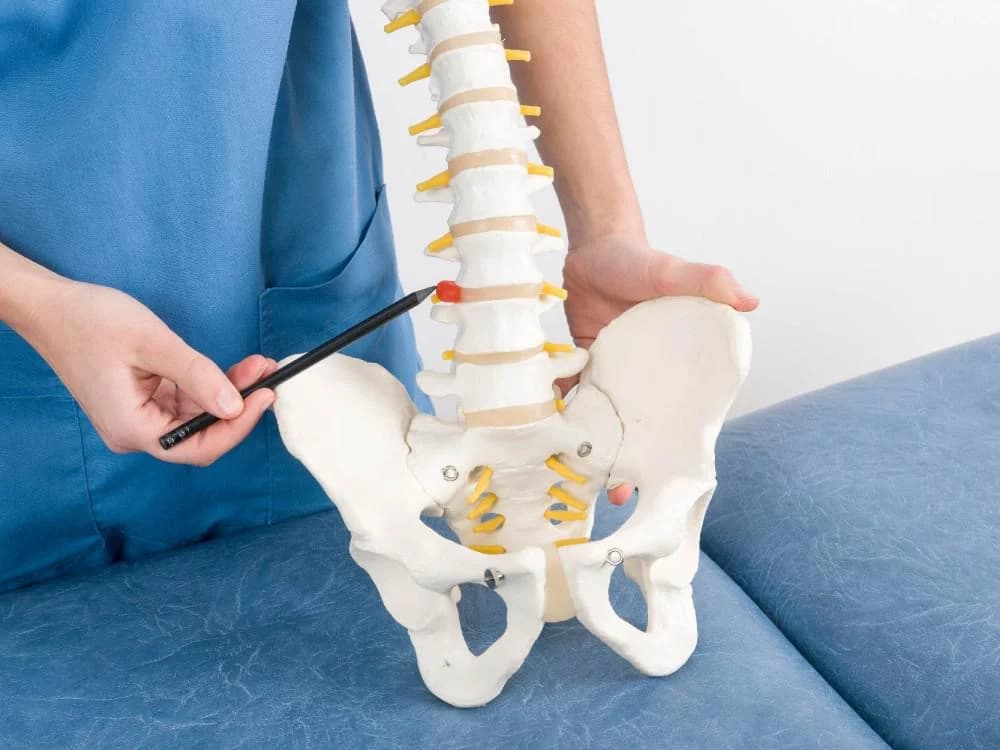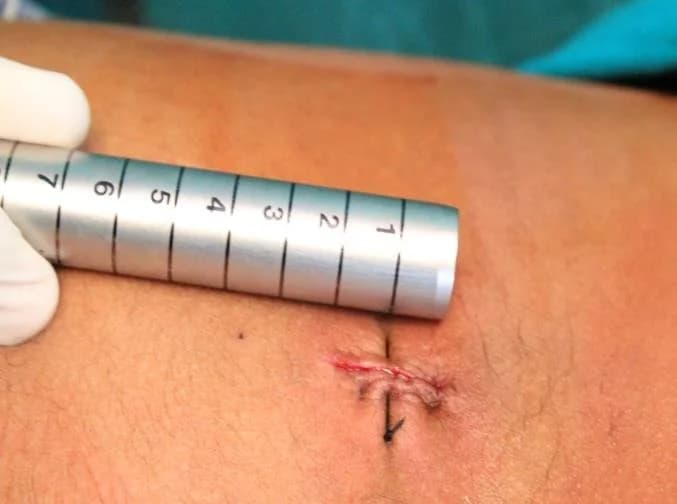Lumbar discectomy is the surgery performed to fix a bulging disk in the lower back. During a minimally invasive lumbar discectomy, an orthopedic surgeon or neurosurgeon takes out part of the damaged disk. This operation will help ease the pressure on the nerve root or spinal cord. One method used is when the surgeon inserts a small tube through the skin on your back, between the vertebrae, and into the space with the herniated disk. Then, through a tube a tiny tool is inserted to remove a part of the disk, or a laser may be used to remove part of the disk. Unlike an open lumbar discectomy, only a very small skin incision is made and a little bone is removed.
Minimally Invasive Lumbar Discectomy
During a minimally invasive lumbar discectomy, the damaged parts of the spongy, doughnut-shaped disc causing pain are removed. Which includes smaller cuts than an open lumbar discectomy. The discs sit between your vertebrae and cushion the spine bones, but sometimes they get damaged through injury, age, or illness. They can become herniated, causing pain, tingling, numbness, or weakness. Generally, the goal of an MIS surgery is stabilizing the vertebral bones and spinal joints or relieving pressure being applied to the spinal nerves. Undergoing a minimally invasive surgery is safer with less recovery time. The potential benefits due to the reduced trauma to the muscles include:
Better cosmetic results from smaller skin incisions (sometimes as small as several millimeters)
Less blood loss from surgery
Reduced risk of muscle damage, since less or no cutting of the muscle is required
Reduced risk of infection and postoperative pain
Faster recovery from surgery and less rehabilitation required
Diminished reliance on pain medications after surgery
As with any surgical procedure, no matter how minimal, there are certain risks associated that include, but are not limited to:
Possible adverse reaction to the anesthetic
Unexpected blood loss during the procedure
Localized infections, no matter how small the incision area

Conditions Treated Using MIS Surgery
Degenerative disc disease
Lumbar spinal stenosis
Spinal deformities such as scoliosis
Spinal infections
Spinal instability including spondylolisthesis
Vertebral compression fractures
Spinal tumors
What Happens During Outpatient Minimally Invasive Lumbar Discectomy?
Due to the spinal nerves being located deep inside the body, the muscle tissue needs to be moved out of the way. Through a small incision, instruments are guided inside. Contrary to popular belief, lasers are very rarely used in MIS surgeries. The goal of lumbar discectomy is to decompress (clear space around) the spinal nerve(s) at one or more levels of the lower back. After the 1-inch long incision is made over the spinal level to target the herniated disc, sequentially-sized tubular retractors are slid through the incision and separate soft tissues, holding them apart. The loupes’ or microscope’s ability to magnify and illuminate enables the surgeon to see the disc and other small tissues that may be compressing spinal nerves. In addition, bone drills and other instruments specially designed for MISS are utilized to remove bone spurs or ligament tissue causing nerve compression. The incision site will be closed with sutures that dissolve within 2-4 weeks. A minimally invasive lumbar discectomy usually takes around 45 minutes.

Common MIS Surgery Treatment Options
Although the field continues to develop, this list highlights some of the most common treatment options:
Discectomy
Spinal discs are elastic rings with soft material inside which serve as cushions between the vertebral bones. In case the elastic ring becomes weak, the soft tissue inside may extrude or herniate outside of the elastic ring. The herniated disc material can compress the nerves passing by, thus causing pain. A minimally invasive lumbar discectomy may be performed to trim or remove the herniated disc.
Spinal Decompression
Spinal stenosis, which is a narrowing of the vertebral canal, is a common condition that can result in compression of the nerves, causing a variety of symptoms, including pain, numbness, and muscle weakness. A minimally invasive lumbar discectomy can be used to remove the bone and soft tissues that are causing the nerve compression.
Transformational Lumbar Interbody Fusion (TLIF)
This MIS technique is performed for patients with refractory mechanical low back and radicular pain associated with spondylolisthesis, degenerative disc disease, and recurrent disc herniation. During this procedure, the patient is on their stomach while two small incisions, screws, and rods are placed between two or more vertebral levels. The intervertebral disc is removed and a cage filled with bone is placed in that void to stabilize the levels affected.

Minimally Invasive Lumbar Discectomy Considerations
Minimally invasive lumbar discectomy offers less blood loss, small incisions, and a quicker recovery time than a traditional discectomy. However, not every patient is a candidate for this type of procedure:
If you have a pre-existing condition, such as cardiovascular disease, your doctor may recommend you undergo surgery in a hospital to ensure your safety should any unforeseen medical issues arise.
While few risks are associated with a lumbar discectomy or micro-discectomy, up to 5% of patients experience recurrent disc herniation.
Your surgeon will explain all potential risks and benefits of undergoing minimally invasive lumbar discectomy well in advance of your procedure.
Conclusion
Minimally Invasive Lumbar Discectomy is a surgical procedure that offers a less invasive alternative to traditional open surgery for treating herniated discs in the lower back. By using smaller incisions and specialized tools, it allows for less damage to the surrounding tissues, resulting in less pain, shorter hospital stays, and faster recovery times. The procedure involves the removal of a portion of the damaged disc to relieve pressure on the spinal cord or nerve root, which can significantly improve symptoms such as pain, tingling, or weakness in parts of the body. Despite its benefits, it’s important to note that not all patients with a herniated disc are suitable candidates for this procedure, and it’s crucial to discuss the risks and benefits with a healthcare provider. Overall, Minimally Invasive Lumbar Discectomy represents a significant advancement in the treatment of herniated discs, offering a safer and more efficient option for patients.
Read more: